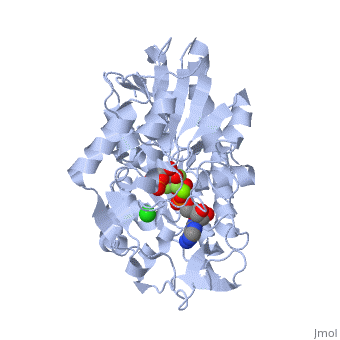Gluconeogenesis
Under development! Gluconeogenesis is a metabolic pathway that results in the generation of glucose from certain non-carbohydrate carbon substrates. In humans the main gluconeogenic precursors are lactate, (which is a part of the triglyceride molecule), alanine and glutamine. Other glucogenic amino acids and all Citric Acid Cycle intermediates (through conversion to oxaloacetate) can also function as substrates for gluconeogenesis. is transported back to the liver where it is converted into by the Cori cycle using the enzyme lactate dehydrogenase. . Pyruvate, the first designated substrate of the gluconeogenic pathway, can then be used to generate glucose. Phosphoglycerate kinase is an enzyme that catalyzes the reversible transfer of a phosphate group from to ADP producing and ATP: 1,3-bisphosphoglycerate + ADP ⇌ glycerate 3-phosphate + ATP Like all kinases it is a transferase. PGK is a major enzyme used in glycolysis, in the first ATP-generating step of the glycolytic pathway. In gluconeogenesis, the reaction catalyzed by PGK proceeds in the opposite direction, generating ADP and 3-phosphoglycerate (3-PG). Catabolism of amino acids, Citric Acid Cycle and Gluconeogenesis 1) Alanine, cysteine, glycine, serine, tryptophan, threonine => pyruvate 2) Tryptophan, threonine, phenylalanine, tyrosine, isoleucine, leucine, lysine => Acetyl-CoA 3) Arginine, histidine, glutamine, proline => glutamate => α-Ketoglutarate 4) Threonine, methionine, isoleucine, valine => Succinyl-CoA 5) Tyrosine, phenylalanine, aspartate => Fumarate 6) Aspartate, asparagine => Oxaloacetate => => phosphoenolpyruvate => ... => Glucose
|
| ||||||||||
